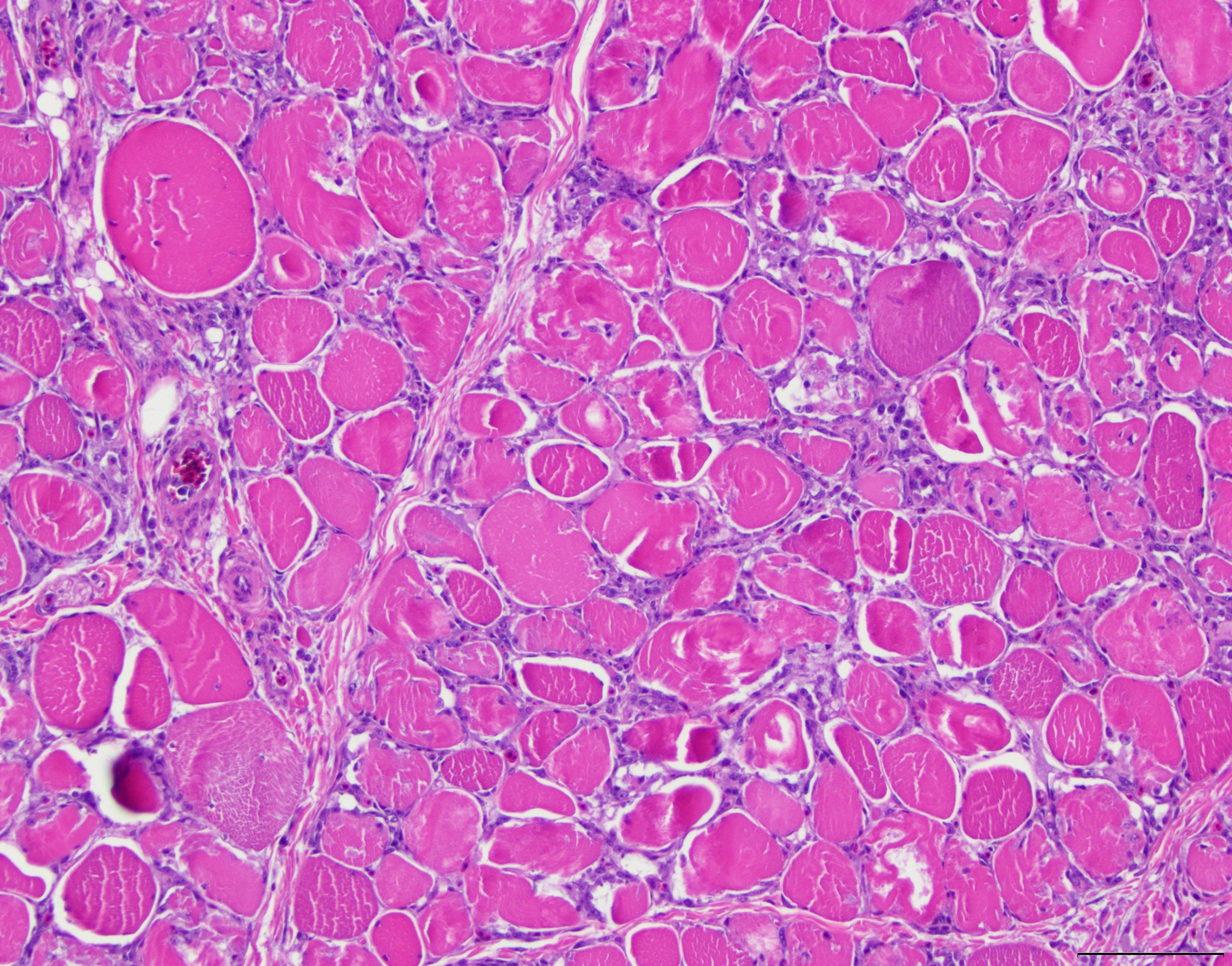Courtesy of Dr. A. J. Van Wettere.
Ionophore toxicity causes muscle damage with incoordination, leg weakness, diarrhea, dyspnea, and reduced feed intake and weight. Stunting may also occur. Type I (“red muscle” or oxidative) fibers are most susceptible, and lesions are most prominent in the leg musculature. Lesions may also be found in heart and gizzard muscle. Adult birds (chickens, turkeys, ratites) and birds with no previous exposure are more sensitive . Gross and histologic changes are similar to those of nutritional myopathy. Ionophores promote movement of cations across the cell membrane, resulting in increased intracytoplasmic concentration of Ca2+, and cell death.
The toxic dose of ionophores is decreased if they are used in conjunction with tiamulin, erythromycin, or chloramphenicol. Salinomycin at the dose recommended for chickens (60 g/ton) is toxic for turkeys; doses >15 g/ton are toxic in turkeys. Monensin (100 g/ton) and lasalocid (100 g/ton) at the dose recommended for chickens are not toxic to turkeys.
Coffee senna (Senna occidentalis) toxicity can produce clinical signs and gross and histologic changes in muscles similar to those seen in ionophore toxicity.
